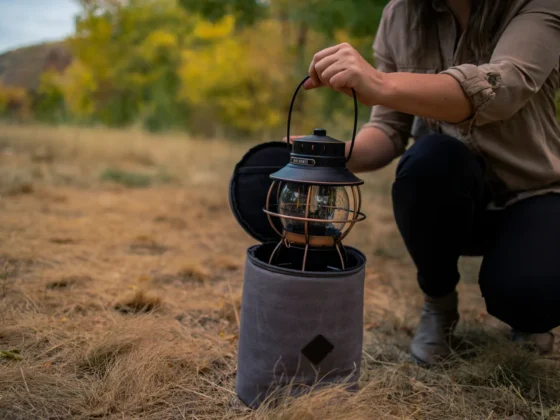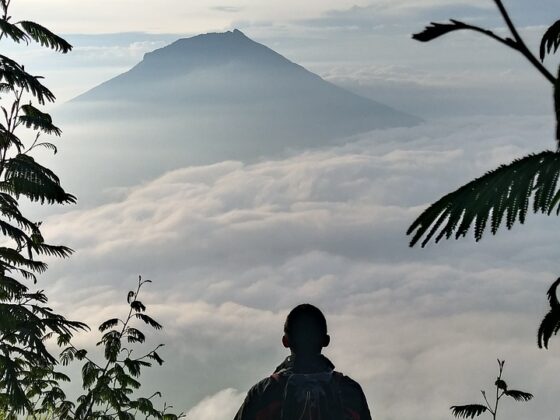Are you looking for a thrilling adventure that lets you enjoy the great outdoors on your own terms? Solo hiking might be just what you need! But before you hit the trails, it’s important to be prepared and equipped with the right knowledge and skills. In this guide, we’ll share essential tips to help you master the solo hike.
From careful planning and packing to staying safe and connected, we’ll cover everything you need to know to make the most of your solo adventure. Whether you’re a seasoned hiker or a beginner, these tips will give you the confidence to tackle the trails solo and enjoy all the beauty and wonder that nature has to offer. So, grab your hiking boots, and let’s get started!
Benefits of Solo Hiking
Hiking is a great way to explore the outdoors and connect with nature. But when you go solo, you get to experience the trail in a completely different way. Here are some of the benefits of solo hiking:
1. Freedom and Flexibility
When you hike solo, you get to set your own pace and choose your own route. You can take breaks whenever you want and spend as much time as you like at a particular spot. You’re not beholden to anyone else’s schedule or preferences. This freedom and flexibility can be incredibly liberating and empowering.
2. Personal Growth and Reflection
Solo hiking can also be a deeply personal and introspective experience. It gives you the space and time to reflect on your thoughts and feelings, connect with your inner self, and gain clarity on important life issues. Many solo hikers report feeling a sense of renewal and rejuvenation after their trips.
3. Connection with Nature
Finally, solo hiking allows you to connect with nature in a deeper and more meaningful way. When you’re alone on the trail, you become more attuned to the sights, sounds, and smells of the natural world around you. You can observe wildlife up close, appreciate the changing landscapes, and experience a sense of awe and wonder that’s hard to replicate in any other setting.
Safety Tips for Solo Hiking
While solo hiking can be thrilling, it’s important to prioritize safety above all else. Here are some essential safety tips to keep in mind:
1. Tell Someone Your Plans
Before you head out on your solo hike, make sure to let someone know where you’re going and when you expect to return. This could be a family member, friend, or park ranger. Be specific about your route and itinerary, and make sure to check in with your designated contact when you get back.
2. Stay on the Trail
It’s tempting to explore off-trail areas or take shortcuts, but this can be dangerous and lead to getting lost or injured. Stick to established trails and follow any signs or markers.
3. Be Prepared for Emergencies
Accidents can happen even to the most experienced hikers. Make sure to carry a first aid kit, emergency whistle, and a fully charged cell phone with you. Know how to use these items in case of an emergency.
4. Check the Weather
The weather can change quickly and unexpectedly, especially in mountainous areas. Check the forecast before you head out, and be prepared for any conditions. Dress in layers and bring rain gear if necessary.
5. Trust Your Instincts
If something feels off or you sense danger, trust your instincts and take appropriate action. This could mean turning back or seeking help from other hikers or park rangers.
Essential Gear for Solo Hiking
Having the right gear can make all the difference on your solo hike. Here are some essential items to consider packing:
1. Backpack
A good backpack is essential for carrying all your gear and supplies. Look for one that’s comfortable, durable, and has enough space to hold everything you need.
2. Hiking Boots/Shoes
Invest in a good pair of hiking boots or shoes that provide ample support and traction. Make sure to break them in before your trip.
3. Navigation Tools
Bring a map, compass, and GPS device or app to help you navigate the trail. Make sure you know how to use these tools before you head out.
4. Water and Food
Stay hydrated by carrying enough water for your entire trip. Bring high-energy, non-perishable foods like trail mix, energy bars, and jerky to keep your energy levels up.
5. Clothing
Dress in layers so you can adjust to changing weather conditions. Bring a waterproof jacket, warm hat, and gloves if necessary.
Planning Your Solo Hike – Route, Weather, and Permits
Proper planning is key to a successful and safe solo hike. Here are some key factors to consider:
1. Route
Choose a route that’s appropriate for your skill level and experience. Consider factors like elevation gain, trail conditions, and distance. Research the trail beforehand to ensure it’s suitable for solo hiking.
2. Weather
Check the weather forecast before you head out and prepare accordingly. Avoid hiking in extreme weather conditions like thunderstorms or blizzards.
3. Permits
Some trails require permits or reservations. Make sure to obtain any necessary permits in advance and carry them with you on the trail.
Navigation Skills for Solo Hiking
Navigation is a critical skill for solo hiking. Here are some tips to help you navigate the trail safely:
1. Know How to Read a Map and Compass
Learn how to read a map and use a compass before your trip. Practice using these tools in advance to build your confidence.
2. Use Landmarks and Trail Markers
Take note of landmarks and trail markers to help you navigate the trail. Look for distinct features like rock formations, tree clusters, and creek crossings.
3. Follow Your Gut
If you’re unsure of your location or direction, trust your instincts and take appropriate action. Don’t hesitate to backtrack or seek help from other hikers or park rangers.
Food and Water Management for Solo Hiking
Proper food and water management is essential for staying energized and hydrated on your solo hike. Here are some tips to keep in mind:
1. Hydration
Drink plenty of water throughout your hike to stay hydrated. Carry enough water for your entire trip, and consider bringing a water filter or purification tablets if water sources are available on the trail.
2. Food
Bring high-energy, non-perishable foods like trail mix, energy bars, and jerky to keep your energy levels up. Don’t rely on finding food on the trail, as this can be unreliable.
3. Cooking
If you plan to cook food on the trail, make sure to follow all camping regulations and carry a lightweight camp stove and fuel.
Common Challenges and How to Overcome Them
Solo hiking can present a variety of challenges. Here are some common challenges and tips for overcoming them:
1. Loneliness
Solo hiking can be lonely at times. Combat loneliness by bringing music, a book, or a journal to keep you company.
2. Fatigue
Fatigue can set in quickly on long hikes. Take frequent breaks, stay hydrated, and fuel your body with high-energy foods.
3. Navigation Mistakes
Navigation mistakes can be dangerous and lead to getting lost. Double-check your map and compass frequently, and don’t be afraid to ask for directions if necessary.
Conclusion
Solo hiking can be a thrilling and rewarding experience. You can tackle the trails confidently and safely with the right preparation, gear, and knowledge. Remember to prioritize safety above all else, and enjoy all the beauty and wonder nature offers.



